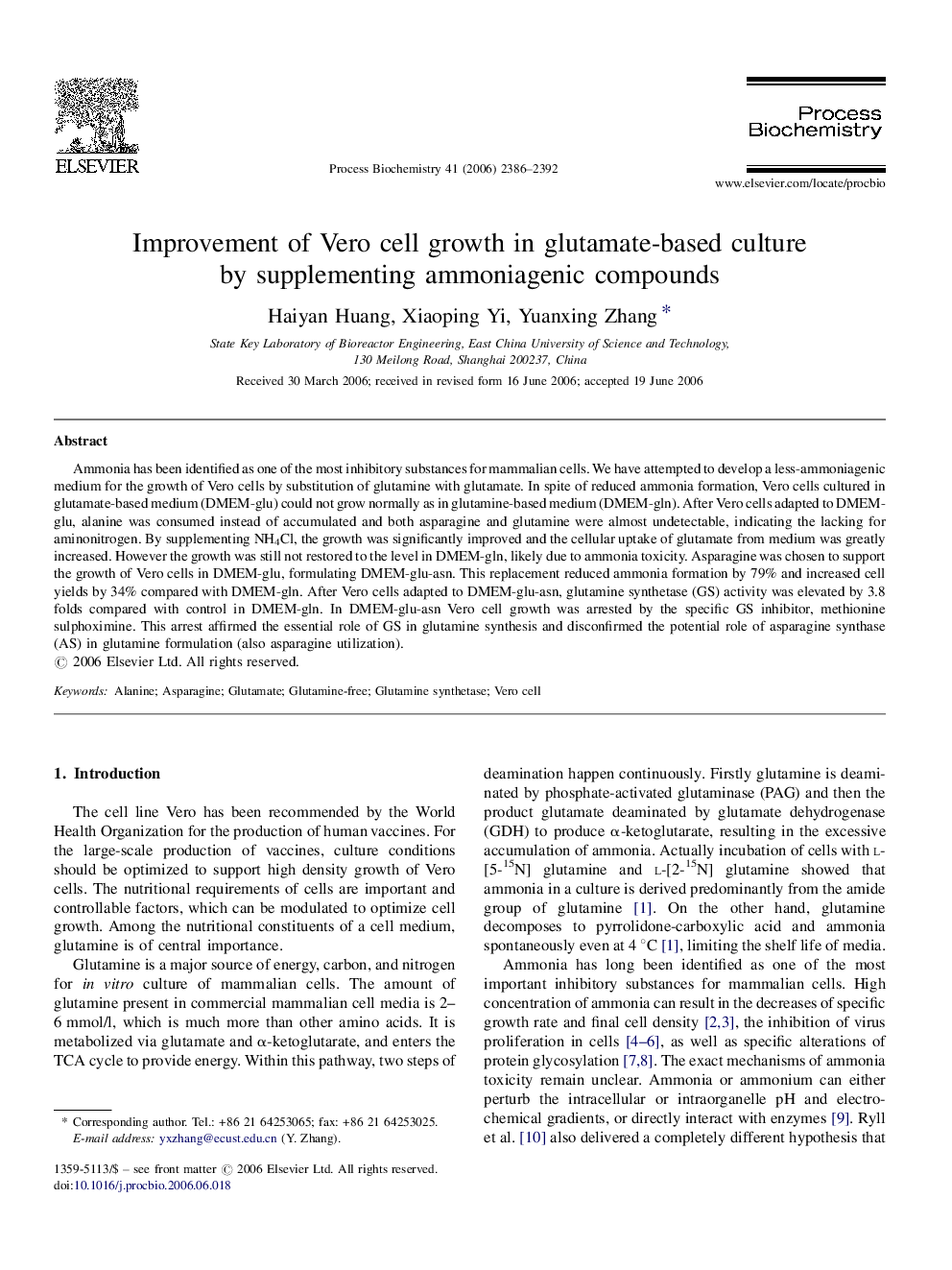| Article ID | Journal | Published Year | Pages | File Type |
|---|---|---|---|---|
| 35931 | Process Biochemistry | 2006 | 7 Pages |
Ammonia has been identified as one of the most inhibitory substances for mammalian cells. We have attempted to develop a less-ammoniagenic medium for the growth of Vero cells by substitution of glutamine with glutamate. In spite of reduced ammonia formation, Vero cells cultured in glutamate-based medium (DMEM-glu) could not grow normally as in glutamine-based medium (DMEM-gln). After Vero cells adapted to DMEM-glu, alanine was consumed instead of accumulated and both asparagine and glutamine were almost undetectable, indicating the lacking for aminonitrogen. By supplementing NH4Cl, the growth was significantly improved and the cellular uptake of glutamate from medium was greatly increased. However the growth was still not restored to the level in DMEM-gln, likely due to ammonia toxicity. Asparagine was chosen to support the growth of Vero cells in DMEM-glu, formulating DMEM-glu-asn. This replacement reduced ammonia formation by 79% and increased cell yields by 34% compared with DMEM-gln. After Vero cells adapted to DMEM-glu-asn, glutamine synthetase (GS) activity was elevated by 3.8 folds compared with control in DMEM-gln. In DMEM-glu-asn Vero cell growth was arrested by the specific GS inhibitor, methionine sulphoximine. This arrest affirmed the essential role of GS in glutamine synthesis and disconfirmed the potential role of asparagine synthase (AS) in glutamine formulation (also asparagine utilization).
